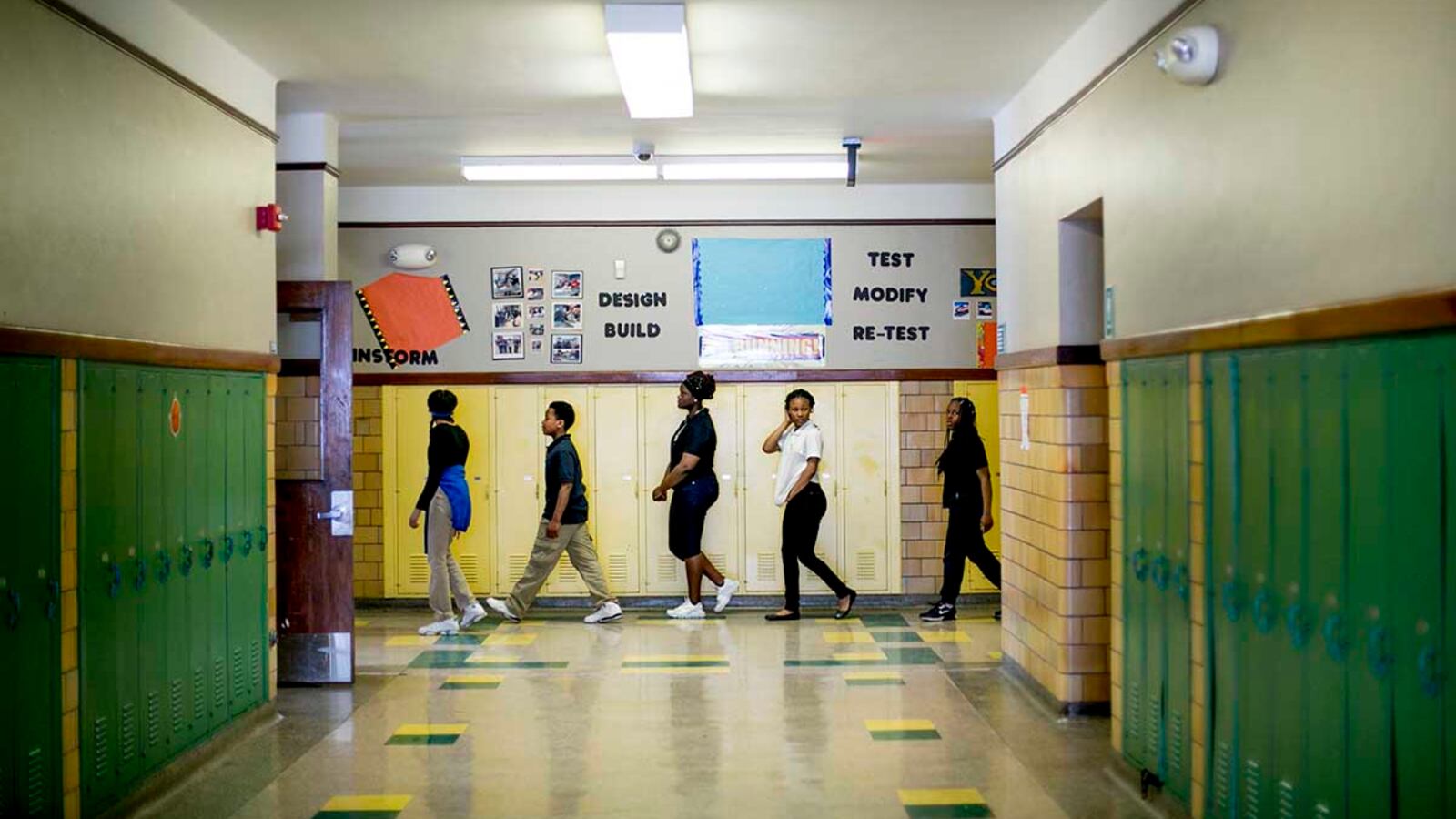Detroit students who leave the city to get an education end up enrolled at schools with slightly higher test scores. But that may not be enough of an advantage given some other negative factors associated with that move.
Researchers at Wayne State University who have been studying student mobility in Detroit say the suburban schools the students leave for are more likely to have higher discipline rates, more new teachers, and higher teacher turnover.
Those other factors “may counteract the benefits of going to a school with slightly better test scores,” said Sarah Winchell Lenhoff, an assistant professor of education at Wayne State.
Lenhoff, along with Associate Professor Ben Pogodzinski, recently released two reports on student mobility. One was based on research on students who leave the city, while the other was based on research on movement in the city.
The two studied student data from the 2010-11 school year through the 2017-18 school year.
The research raised concerns about the 26,000 children who commute to schools outside Detroit and the many more who move within the city during and between school years.
That frequent movement, one report noted, “has created an unstable learning environment for thousands of Detroit resident students, exacerbating many of the challenges faced by students and schools in the city.”
Among the key findings from both reports:
- Black students in particular were far more likely to attend schools in the suburbs with higher discipline rates than schools they could attend in the city. Non-black students, however, attended schools in the suburbs with lower rates of discipline.
- Overall, the students who left the city to attend schools were leaving schools that were lower in quality than the schools of the students who stayed.
- Detroit students had much higher rates of changing schools during the school year and between school years, compared with their peers in the rest of Wayne County, as well as in Oakland and Macomb counties.
- Students were less likely to change schools within a school year if the school they attended rates high in organizational climate, defined as having effective leadership, collaborative teachers, ambitious instruction, supportive environment, and involved families.
- On average, students who change schools within the city were not moving to schools that were significantly different than the ones they left.
- More of those changing schools over the summer left a Detroit district school and moved to a charter school.
- More of those who left during the school year moved from a charter school to a Detroit district-run school.
The latter finding has financial implications, Lenhoff said, because the district won’t receive full funding for those students right away.
Her and Pogodzinski’s research is part of a project funded by the Wayne State College of Education and the Skillman Foundation (which also funds Chalkbeat). Earlier this year, they released a report that shed light on the one-quarter of Detroit students who leave the city, concluding that a major reason students leave is because they live in neighborhoods with schools that have deteriorated and closed.
A major report about student mobility by Chalkbeat and Bridge Magazine last year relied on research from Lenhoff and Pogodzinski.
Studying mobility is crucial in a city where both district and charter schools often struggle to fill seats. Each student who leaves costs the district $8,000 in state funding.
You can find the full reports here. Or read them below.


